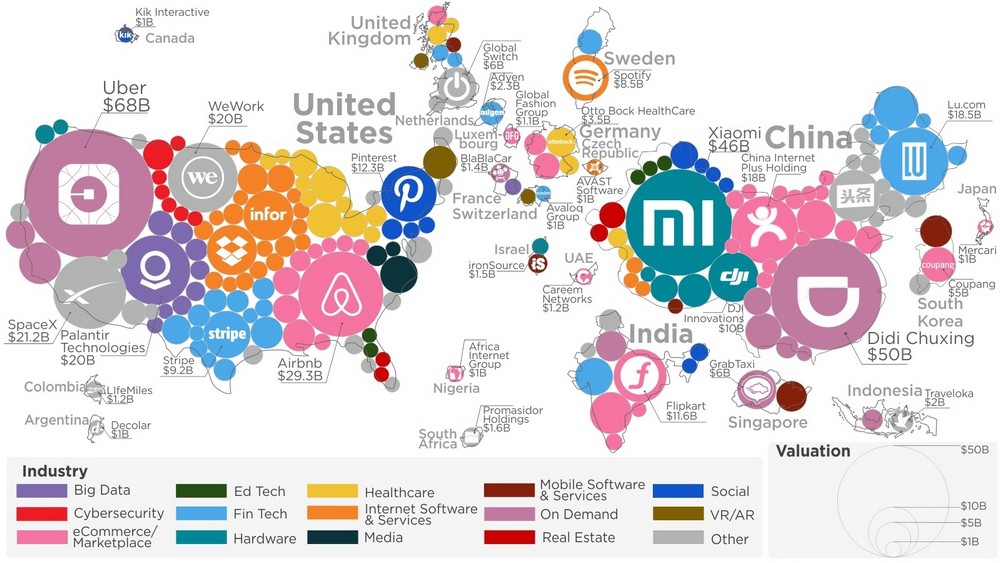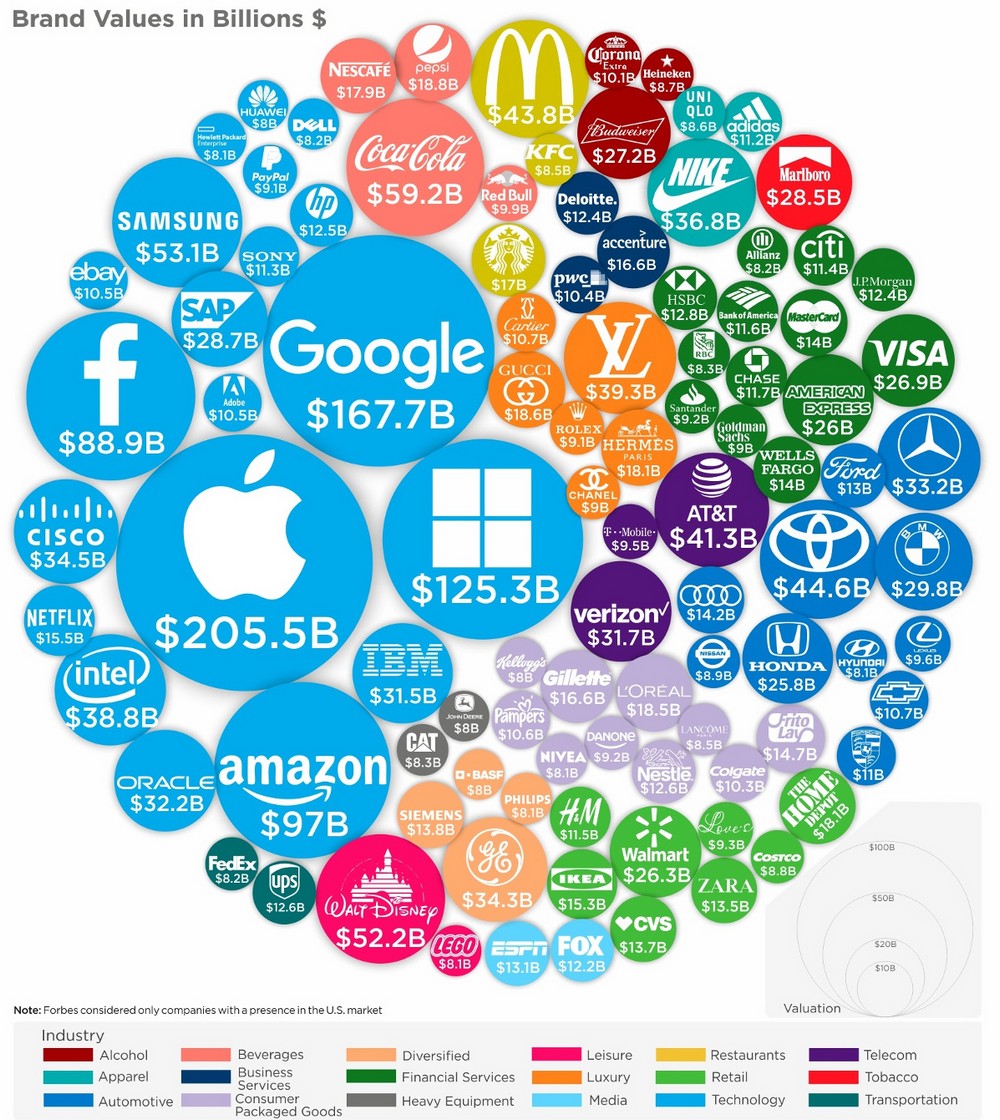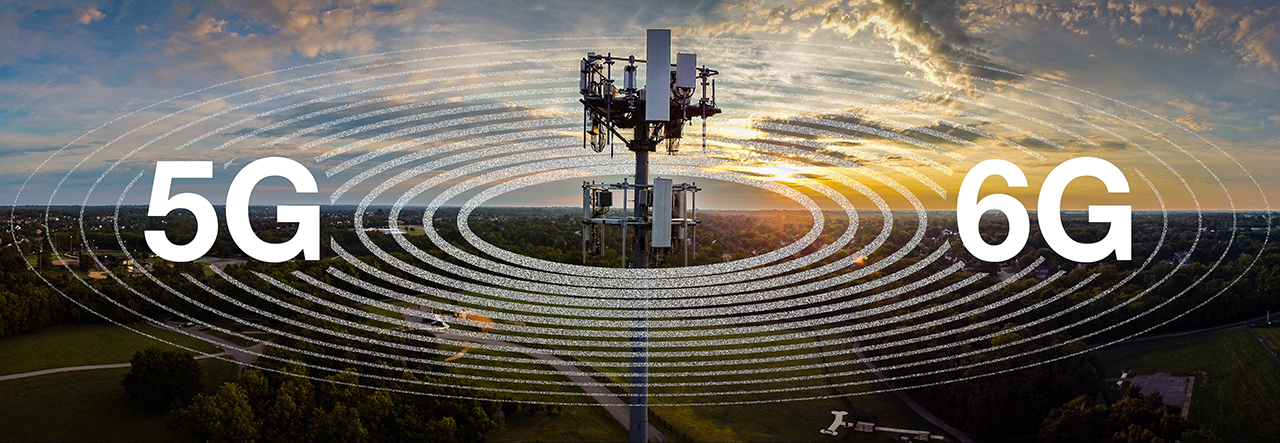The Tech Convergence of the 2020s: Mapping the Major Technologies and the Future They’re Building Together
The 2020s are a decade of convergence. No longer is innovation driven by single technologies in isolation. Instead, the most transformative breakthroughs arise at the intersections—where artificial intelligence meets biotech, or where blockchain blends with climate tech. Below, we explore the 10–20 major technologies defining this decade, and then dive deep into the combinatorial magic that is giving rise to entire new industries and game-changing companies.
🔧 The 20 Most Pivotal Technologies of the 2020s
Here’s a breakdown of the most important technologies right now, and those likely to dominate the rest of the decade:
1. Artificial Intelligence (AI)
AI has become the foundational layer of modern tech—spanning natural language processing (like ChatGPT), computer vision, robotics, and more. It's being used in virtually every industry: healthcare, finance, logistics, creative arts, and even governance.
2. Machine Learning & Deep Learning
These subsets of AI enable systems to learn from data and improve over time. Neural networks, transformer models, and reinforcement learning are enabling breakthroughs in drug discovery, autonomous vehicles, and personalized recommendations.
3. Quantum Computing
Still in its early stages, quantum computing promises exponential speedups in processing power for certain types of problems—like simulating molecules or solving complex optimization challenges. Giants like IBM, Google, and startups like PsiQuantum are pushing the limits.
4. Blockchain and Decentralized Ledger Technologies (DLT)
Originally known for powering cryptocurrencies, blockchain is now being applied to supply chains, finance, digital identity, voting systems, and decentralized internet infrastructure.
5. Web3
Built on blockchain, Web3 proposes a user-owned internet with decentralized apps (dApps), community governance (DAOs), and new business models for creators. It's controversial, experimental—but evolving rapidly.
6. Extended Reality (XR): AR/VR/MR
Augmented reality (AR), virtual reality (VR), and mixed reality (MR) are redefining entertainment, education, training, and even remote work. Apple Vision Pro and Meta Quest are major players, with enterprises beginning to adopt XR seriously.
7. 5G and Next-Gen Connectivity
Ultra-low latency and high-speed internet through 5G (and eventually 6G) is enabling smart cities, IoT, real-time gaming, autonomous drones, and large-scale sensor networks.
8. Internet of Things (IoT)
Billions of connected devices—from smart thermostats to industrial machinery—are creating real-time digital mirrors of the physical world. IoT fuels predictive maintenance, smart agriculture, and real-time logistics.
9. Edge Computing
As IoT grows, edge computing processes data closer to the source (on the “edge” of the network) to reduce latency and bandwidth costs. Essential for self-driving cars, industrial automation, and real-time analytics.
10. Biotechnology & Genomics
CRISPR, gene editing, mRNA vaccines, and synthetic biology are transforming healthcare, agriculture, and even manufacturing. The biology revolution is catching up with the digital one.
11. Neurotechnology & Brain-Computer Interfaces (BCI)
Neural implants, wearable EEGs, and non-invasive interfaces like those developed by Neuralink and Synchron aim to bridge minds and machines—enabling new treatments, control systems, and potentially thought-based communication.
12. Renewable Energy & Storage
Solar, wind, and battery technology are reaching tipping points in cost and efficiency. Innovations in grid management and materials science (e.g., perovskites) are helping scale clean energy rapidly.
13. Climate Tech & Carbon Removal
Carbon capture, regenerative agriculture, direct air capture, and circular economy startups are aiming to mitigate climate change while creating trillion-dollar opportunities.
14. Autonomous Vehicles & Drones
Self-driving cars, delivery drones, and autonomous ships are changing transport and logistics. AI, sensors, edge computing, and regulatory frameworks play critical roles here.
15. Additive Manufacturing (3D Printing)
Used in aerospace, medicine, housing, and even food, 3D printing enables hyper-customization, decentralized manufacturing, and on-demand production.
16. Digital Twins
A digital replica of a physical object or system, digital twins are used to simulate, monitor, and optimize everything from factories to cities to humans.
17. Robotics
Modern robots are becoming more agile, adaptive, and collaborative. Boston Dynamics' humanoids or warehouse bots from companies like Locus Robotics are revolutionizing labor-intensive industries.
18. Cybersecurity and Zero-Trust Architectures
As systems become more interconnected, new frameworks for authentication, encryption, and secure access are critical. AI-powered threat detection and quantum-safe encryption are key focus areas.
19. Synthetic Media & Generative Content
AI-generated art, music, videos, voices (deepfakes), and 3D assets are transforming content creation and raising ethical concerns around authenticity and misinformation.
20. Space Tech
Satellite internet (Starlink), space tourism (Blue Origin, SpaceX), and asteroid mining are no longer science fiction. Space is now a geopolitical and commercial frontier.
🔄 The Power of Intersection: Where the Future Emerges
While each of these technologies is powerful on its own, it’s their convergence that is birthing entirely new industries. Let’s examine some potent intersection points:
🧠 AI + Biotech = Intelligent Drug Discovery
Startups like Insilico Medicine or Recursion use AI to model biological systems and discover molecules faster and cheaper than traditional pharma. AI dramatically reduces the time and cost of clinical trials.
New Industries:
-
Predictive healthcare platforms
-
Personalized medicine firms
-
AI-powered gene editing services
📡 5G + IoT + Edge = Hyperconnected Smart Environments
Imagine smart farms that monitor soil, water, and crops in real time—or factories that self-correct before breaking down.
New Companies:
-
Autonomous industrial infrastructure managers
-
Real-time agriculture-as-a-service platforms
-
Smart city operating systems
🌍 Blockchain + Climate Tech = Carbon Markets 2.0
Decentralized carbon credits with transparent, tamper-proof verification are disrupting traditional carbon offset schemes.
New Models:
-
On-chain regenerative farming protocols
-
Global environmental DAOs
-
Carbon-credit NFT marketplaces
🎓 XR + AI + Web3 = Metaverse Education
AI tutors, VR campuses, and credentialing on blockchain enable a new form of immersive, peer-to-peer learning.
New Startups:
-
Decentralized universities
-
AI-powered immersive tutors
-
Metaverse-native workforce training
🚘 Autonomous Vehicles + Digital Twins + Edge Computing
Simulated environments help test millions of driving scenarios. Digital twins of roads, cities, and vehicles enable real-time optimization and safer navigation.
Emerging Companies:
-
Infrastructure-aware autonomous mobility firms
-
Real-time fleet optimization services
-
Virtual regulators (for sim environments)
💡 Quantum Computing + Cybersecurity
Quantum computers threaten current encryption. This gives rise to post-quantum cryptography and hybrid security layers.
Startups to Watch:
-
Quantum-safe cloud providers
-
Crypto wallet companies with quantum-proof keys
-
Zero-trust quantum security systems
🧬 BCI + Generative AI
This will be the interface revolution. Think-to-text, thought-controlled music composition, or even brain-guided game development.
Potential Ventures:
-
Brain-controlled design platforms
-
Mental health monitoring tools using brainwave-AI integration
-
BCI-driven creator platforms
🏭 3D Printing + AI + Digital Twins
Factories that simulate, then print. Hyper-customized, localized manufacturing.
New Businesses:
-
AI-first microfactories
-
Personal product designers with 3D printing APIs
-
Print-on-demand prosthetics, shoes, homes
🚀 What Comes Next: Founding the Future
Next-Gen Unicorns Will Be…
-
AI-native healthcare platforms (predictive diagnostics, mental health coaching, real-time biofeedback)
-
Web3-enabled climate marketplaces (transparent ESG tracking and crediting)
-
Neuro-enhancement platforms (BCI + neurofeedback + productivity tools)
-
Decentralized knowledge networks (Vidya-style collaborative education platforms with AI mentors)
-
AIxCrypto synthetic economic systems (game economies that mirror real economies with value)
🧭 Final Thoughts: The Decade of Fusion
The rest of the 2020s won’t be about isolated tech miracles—but fusion. The magic lies in mixing disciplines, crossing silos, and creating recombinant innovation. We are witnessing the birth of a new industrial age—one where minds, machines, and markets blur. The most successful founders, researchers, and investors will be those who stand at the intersections—and know how to build bridges between them.
Which convergence excites you most? Which one are you building in?
Let’s keep the conversation going—because the future is being prototyped right now.
100 AI + Crypto: Top 10
Tech Startups At The Intersection Of AI And Crypto: Part 1
Tech Startups At The Intersection Of AI And Crypto: Part 2
100 Company Ideas At The Intersection Of AI And Crypto
The Plateau of Plenty: Why VCs Are the Seers of Our Time
Paul Graham’s Timeless Advice for Tech Startups: A Masterclass in Building the Future
Paul Graham, Brad Feld, Me, BBC (2010)
100 Emergent Technologies Of The Recent Decades And Their Intersections
Government Tech: The Next Great Leap in Nation-Building (GovTech)
AI-Era Social Network: The Facebook Killer That Looks Nothing Like Facebook
10 Trends In ClimateTech
Why Thinking Big Is the Safest Bet in the Age of AI and Exponential Technologies
The Collision of Emerging Technologies: Where the Future of Tech Ignites
Unicorns, Elephants, And Plentiful Trillion Dollar Companies
Software Ate the World. Now AI Is Eating Software.
Google vs. Google: The AI Disruption and the Innovator’s Dilemma
Multi-Disciplinary Approaches Will Win the Future
The $50 Trillion Unlock: Why GovTech, Not the BRI, Will Transform the Global South
2020 का दशक और तकनीकी संगम: प्रमुख तकनीकों और उनके मिलन से जन्म लेते नए उद्योग
2020 का दशक केवल नई तकनीकों का नहीं, बल्कि उनके संगम का है। अब नवाचार किसी एक तकनीक से नहीं, बल्कि दो या अधिक तकनीकों के आपस में मिलने से होता है। जब कृत्रिम बुद्धिमत्ता जैव-प्रौद्योगिकी से मिलती है, या ब्लॉकचेन जलवायु तकनीक से जुड़ता है — तभी असली क्रांति होती है। इस ब्लॉग में हम उन 10–20 प्रमुख तकनीकों का विश्लेषण करेंगे जो इस दशक को परिभाषित कर रही हैं, और फिर जानेंगे कि इनके आपसी मेल से कौन-से नए उद्योग और स्टार्टअप जन्म ले सकते हैं।
🔧 2020 के दशक की 20 सबसे महत्वपूर्ण तकनीकें
1. कृत्रिम बुद्धिमत्ता (AI)
AI आज हर उद्योग की नींव बन चुकी है—चाहे वह स्वास्थ्य हो, वित्त हो, लॉजिस्टिक्स हो या शिक्षा। ChatGPT जैसे मॉडल प्राकृतिक भाषा समझने और संवाद करने में क्रांति ला रहे हैं।
2. मशीन लर्निंग और डीप लर्निंग
डेटा से सीखने की क्षमता वाली ये तकनीकें नई दवाओं की खोज, सिफारिश प्रणालियाँ और स्वचालित निर्णय प्रणाली बना रही हैं।
3. क्वांटम कंप्यूटिंग
यह कंप्यूटिंग का भविष्य है—अभी शुरुआती अवस्था में है लेकिन कुछ समस्याओं को हल करने में पारंपरिक कंप्यूटरों से लाखों गुना तेज हो सकती है।
4. ब्लॉकचेन और डीसेंट्रलाइज़्ड लेजर टेक्नोलॉजी (DLT)
क्रिप्टोकरेंसी से आगे बढ़ते हुए, ब्लॉकचेन का उपयोग अब सप्लाई चेन, पहचान, मतदान प्रणाली, और पारदर्शिता बढ़ाने के लिए हो रहा है।
5. वेब3
एक विकेंद्रीकृत इंटरनेट—जहां ऐप्स, संपत्ति और पहचान उपयोगकर्ताओं के स्वामित्व में होती है। यह एक प्रयोगात्मक लेकिन तेजी से बढ़ती दुनिया है।
6. एक्सटेंडेड रियलिटी (XR): AR/VR/MR
वास्तविक और आभासी दुनिया के मेल से शिक्षा, मनोरंजन और कार्यस्थल में नई संभावनाएँ खुल रही हैं।
7. 5G और अगली पीढ़ी की कनेक्टिविटी
अल्ट्रा-फास्ट इंटरनेट, IoT, गेमिंग, और स्मार्ट शहरों के लिए रीढ़ की हड्डी बन रहा है।
8. इंटरनेट ऑफ थिंग्स (IoT)
हर वस्तु—फ्रिज से लेकर फैक्ट्री मशीन तक—डेटा उत्पन्न कर रही है। इससे भविष्यवाणी आधारित रखरखाव, स्मार्ट खेती और लॉजिस्टिक्स संभव हुआ है।
9. एज कंप्यूटिंग
डेटा को उसके स्रोत के पास ही प्रोसेस करना, जिससे देरी घटे और गति बढ़े—यह स्वचालित वाहनों और औद्योगिक प्रणालियों के लिए आवश्यक है।
10. जैव प्रौद्योगिकी और जीनोमिक्स
CRISPR, mRNA, और सिंथेटिक बायोलॉजी की मदद से स्वास्थ्य, कृषि और उत्पादन में क्रांति आ रही है।
11. न्यूरोटेक्नोलॉजी और ब्रेन-कंप्यूटर इंटरफेस (BCI)
मानव मस्तिष्क को कंप्यूटर से जोड़ने की दिशा में बड़ी प्रगति हो रही है—सोच के ज़रिए टेक्स्ट टाइप करना अब कल्पना नहीं रही।
12. नवीकरणीय ऊर्जा और बैटरी तकनीक
सौर और पवन ऊर्जा की लागत घट रही है, और बैटरियों की दक्षता बढ़ रही है। ये बदलाव पर्यावरण और अर्थव्यवस्था दोनों के लिए क्रांतिकारी हैं।
13. जलवायु तकनीक और कार्बन रिमूवल
कार्बन कैप्चर, रीजनरेटिव फार्मिंग, और सस्टेनेबल मटेरियल्स का उपयोग बढ़ रहा है। ये तकनीकें जलवायु संकट का व्यावसायिक समाधान पेश कर रही हैं।
14. स्वचालित वाहन और ड्रोन
सेल्फ-ड्राइविंग कारें, डिलीवरी ड्रोन और ऑटोमेटेड शिपिंग सिस्टम परिवहन का चेहरा बदल रहे हैं।
15. 3D प्रिंटिंग (एडिटिव मैन्युफैक्चरिंग)
ऑन-डिमांड निर्माण और कस्टम उत्पादों के लिए 3D प्रिंटिंग का उपयोग चिकित्सा, रक्षा, आवास, और यहां तक कि भोजन में भी हो रहा है।
16. डिजिटल ट्विन्स
किसी वस्तु या प्रणाली की डिजिटल प्रति, जो सिमुलेशन और रीयल-टाइम निगरानी में मदद करती है—फैक्ट्री, शहर या यहां तक कि शरीर के लिए भी।
17. रोबोटिक्स
मानव-जैसे रोबोट अब अधिक बुद्धिमान, फुर्तीले और सहयोगी बन रहे हैं—गोदाम, निर्माण और देखभाल जैसे क्षेत्रों में।
18. साइबर सुरक्षा और ज़ीरो-ट्रस्ट आर्किटेक्चर
जैसे-जैसे प्रणालियाँ जुड़ती हैं, सुरक्षा भी अधिक जटिल बनती जा रही है। AI-संचालित खतरे की पहचान और क्वांटम-सुरक्षित एन्क्रिप्शन महत्वपूर्ण बन रहे हैं।
19. सिंथेटिक मीडिया और जेनरेटिव कंटेंट
AI अब चित्र, संगीत, आवाज़ और वीडियो भी बना सकता है—जिससे रचनात्मकता और गलत सूचना दोनों के नए रास्ते खुलते हैं।
20. अंतरिक्ष तकनीक
SpaceX और Blue Origin जैसी कंपनियाँ अब उपग्रह इंटरनेट, स्पेस टूरिज़्म और खनन जैसी अवधारणाओं को साकार कर रही हैं।
🔄 तकनीकों का संगम: जब दो या अधिक मिलते हैं, तो भविष्य बनता है
यह दशक केवल नई तकनीकों का नहीं है—बल्कि उनके मेल का है। आइए देखें कुछ शक्तिशाली मेल:
🧠 AI + बायोटेक = स्मार्ट दवा खोज
AI अब दवा खोज में प्रयोगशालाओं से बेहतर साबित हो रही है। इससे लागत और समय दोनों में भारी कटौती होती है।
उद्योग:
-
भविष्यवाणी आधारित स्वास्थ्य देखभाल
-
वैयक्तिकीकृत चिकित्सा
-
AI संचालित जीन संपादन सेवाएं
📡 5G + IoT + एज कंप्यूटिंग = स्मार्ट दुनिया
किसान अपने खेत को स्मार्टफोन से चला सकते हैं। फैक्ट्रियाँ बिना रुकावट के चल सकती हैं।
स्टार्टअप:
-
स्वायत्त स्मार्ट इन्फ्रास्ट्रक्चर
-
रीयल-टाइम कृषि समाधान
-
स्मार्ट शहर ऑपरेटिंग सिस्टम
🌍 ब्लॉकचेन + जलवायु तकनीक = कार्बन बाज़ार 2.0
पारदर्शी और भरोसेमंद कार्बन क्रेडिट सिस्टम तैयार हो रहे हैं।
नए मॉडल:
-
ऑन-चेन खेती प्रोटोकॉल
-
पर्यावरणीय DAO
-
कार्बन NFT बाज़ार
🎓 XR + AI + Web3 = मेटावर्स शिक्षा
AI शिक्षक, VR कक्षाएं, और ब्लॉकचेन प्रमाणपत्र—यह है भविष्य की शिक्षा।
स्टार्टअप्स:
-
विकेंद्रीकृत विश्वविद्यालय
-
मेटावर्स प्रशिक्षक
-
ब्लॉकचेन-आधारित स्किल प्रमाणन
🚘 स्वचालित वाहन + डिजिटल ट्विन्स + एज कंप्यूटिंग
रास्तों, वाहनों और शहरों के डिजिटल ट्विन्स की मदद से AI ड्राइविंग और भी सुरक्षित बन रही है।
संभावनाएं:
-
इन्फ्रास्ट्रक्चर-ज्ञानी वाहन
-
वर्चुअल नियामक
-
रीयल-टाइम वाहन अनुकूलन
💡 क्वांटम कंप्यूटिंग + साइबर सुरक्षा
क्वांटम कंप्यूटिंग से वर्तमान एन्क्रिप्शन खतरे में है—इससे नए साइबर सुरक्षा उद्योग उभरेंगे।
नए खिलाड़ी:
-
क्वांटम-सुरक्षित क्लाउड
-
ज़ीरो-ट्रस्ट नेटवर्क सुरक्षा
-
क्रिप्टो वॉलेट्स जो क्वांटम-प्रूफ हों
🧬 BCI + जेनरेटिव AI
सोचो और टेक्स्ट टाइप हो जाए। संगीत सिर्फ सोचने से बने। यह अब विज्ञान-कथा नहीं है।
उद्योग:
-
सोच आधारित डिज़ाइन टूल्स
-
मानसिक स्वास्थ्य मॉनिटरिंग
-
ब्रेन-कंट्रोल्ड गेमिंग
🏭 3D प्रिंटिंग + AI + डिजिटल ट्विन्स
उत्पादन से पहले डिजिटली परीक्षण करें। फिर उसे अपने पड़ोस में प्रिंट करें।
बिजनेस आइडियाज़:
-
AI संचालित सूक्ष्म फैक्ट्रियाँ
-
व्यक्तिगत उत्पाद प्रिंटिंग
-
ऑन-डिमांड कृत्रिम अंग
🚀 आगे क्या? कौन-से उद्योग बनेंगे?
भविष्य के यूनिकॉर्न होंगे:
-
AI आधारित स्वास्थ्य प्लेटफॉर्म
-
Web3 जलवायु बाज़ार
-
न्यूरो-एन्हांसमेंट टूल्स
-
AI शिक्षक वाले विकेंद्रीकृत ज्ञान मंच
-
AI + क्रिप्टो आधारित अर्थव्यवस्थाएं
🧭 निष्कर्ष: यह दशक है संगम का
2020 का दशक तकनीकों की शादी का युग है। नवाचार अब अकेले नहीं होता—बल्कि मिश्रण से होता है। जो लोग इन चौराहों पर खड़े हैं—AI और बायोटेक, XR और शिक्षा, या ब्लॉकचेन और जलवायु—वही भविष्य बनाएंगे।
आपके अनुसार कौन-सी तकनीकी जोड़ी सबसे अधिक रोमांचक है?
टिप्पणियों में बताएं—क्योंकि भविष्य अभी बनाया जा रहा है।
2020 का दशक और तकनीकी संगम: प्रमुख तकनीकों और उनके मिलन से जन्म लेते नए उद्योग https://t.co/JmqFl4lxx3
— Paramendra Kumar Bhagat (@paramendra) August 1, 2025





